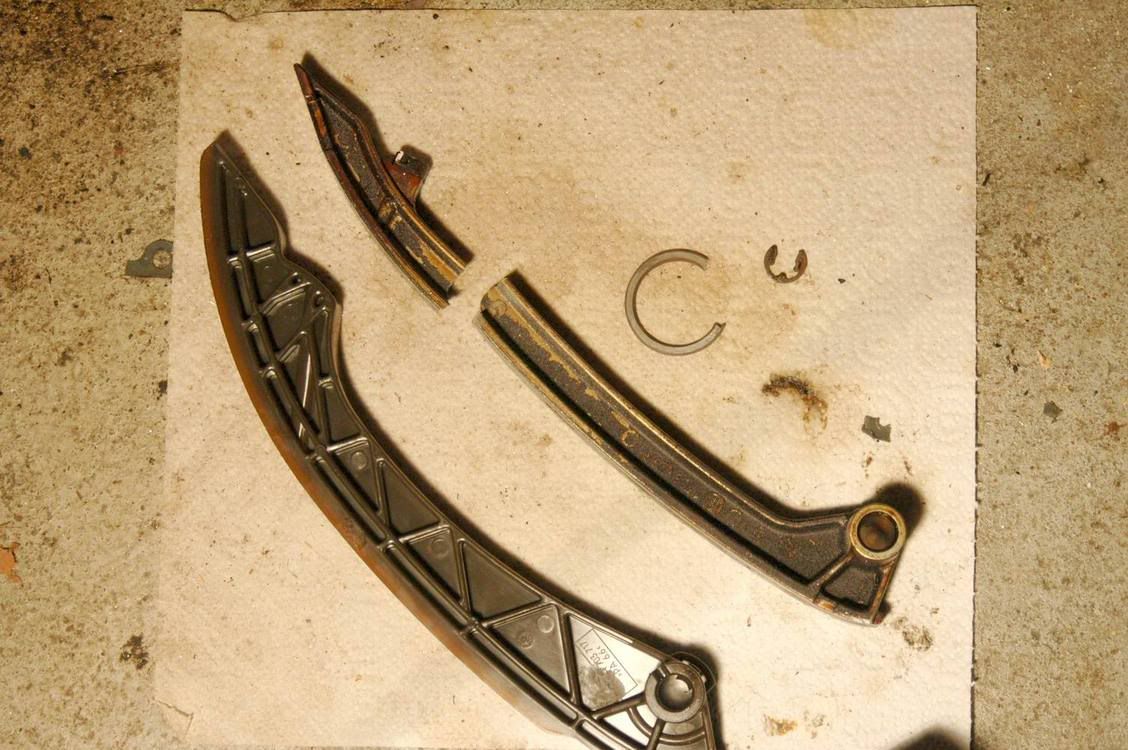Oh, this could be intresting. I expect photos, and lots of them!
Will check bolts now for you.

Hey folks,
Just a quick recap,
My 92 E34 had a very sick M50 engine, I replaced the engine and now everything is perfect. Ill be doing an autopsy on the old engine this weekend and I wonder if anyone knows the correct size tool for removing the head bolts. More to come!

Oh, this could be intresting. I expect photos, and lots of them!
Will check bolts now for you.
Car: BMW 525iA.
Engine: M20.
Trans: Auto.
Year: 1990.
Location: Durban, South Africa.
Originally Posted by fujioko
Headbolts are a torx 8 or 10 i think. i just took mine off the other week

Ok folks,
This will be an autopsy to determine the cause of the death of the original M50 with 275K. For all you CSI fans here are some clues and observations that were discovered prior and after the engine was removed. The definitive answer most likely will be uncovered when the cylinder head is removed.
First of all the engine was still running when it was removed. A compression test showed 190PSI on five of the six cylinders and zero PSI on the #2 cylinder. A leak down test on #2 was preformed, however no actual pressure could be built up. The compressor provided 100PSI at 6.6CFM and I could not get a reading on #2. As you can guess the air was rushing out of #2 as fast as it was pumped in.
The oil in the sump smelled of fuel but was not contaminated with water. The radiator and antifreeze were not contaminated with oil. No unusual cooling system pressure was noticed during the running of the engine. The head gasket was most likely good.
An amateur mechanic most likely worked on the engine prior to my purchase of the vehicle. Most noticeably was the absence of the braded ground wires on the camshaft cover. I suspect the cam cover is very well insulated with the rubber gaskets and bushings. Most likely this is for noise abatement. Anyway the absence of the ground wires probably exacerbated the mechanical damage and made the engine run worse. I theorize that there was not a sufficient path for the secondary current to flow from the ignition coils and probably damaged most or all of the coils. In any case I did not reuse the coils as the new engine came with a set.
When I pulled the intake manifold sever chunks of steel came out. The chunks were about the size of a grain of rice. These were steel and not aluminum. Very unusual!
Looking into the intake port the valves appeared intact. Also there was no unusual ware on the camshafts.
The spark plug on #2 was clean as the day it was put in. It obviously never fired. Also it was loaded with fresh oil.
Ill pick up the head bolt tool and proceed with the autopsy any theories?
When you pull the head, if the spark plug, all the valves, and the piston is clean as **** - it was filled with coolant when firing.

Ditto. Steam cleaning.
Fuel in the sump could be attributed to any number of things, notably continually cranking the engine without firing -- cylinder washout.
It seems like a valve issue to me, and that's what I'd wager money on, were I a betting man.
best, whit

Ok, the autopsy was conducted today. The cause of death was due to complications from an attempt to helicoil the spark plug threads.
The steel shards that I found in the intake manifold were consistent with the steel thread inserts in the #2 spark plug hole.
The trauma to the cylinder head caused the intake valves to stay slightly open all the time. This is why I could not get pressure during the initial leak down test.
The cylinder bore on #2 appears to be undamaged.
Obviously the piston is NFG. But the block is most likely good. Probably ebay it.
Does anyone think the head could be repaired? Im not interested in repairing the head for myself, but I thought if there was any value in the head, I could sell it on ebay. Try and recoup my expenses on the replacement engine.

I guess I should mention the engine was very clean and no sludge on the inside. Also the timing chain guides appeared to be in nice shape, however they were extremely brittle ( I busted them).
The brittle guides suggest they were most likely original. Given the engine had 275K and was most likely never opened up.. I would say the PO probably changed the oil often and most likely maintained the car well.
I decided to throw the block and head on ebay. Ya never know. Ill get a few bucks and perhaps the engine will live again.

I thought pre '95 the chain guide was aluminum. Only after 9/94 did BMW changed the guide to plastic. Is the timing chain guide in your 92 plastic?

'01 540it, 6/01
'03 325i 5 speed, 9/02
'10 535ix. 9/09
'10 mini 6 speed
'15 mini countryman 6 speed

all i can say is........... ouch!
Germans: Why can't they make everything?